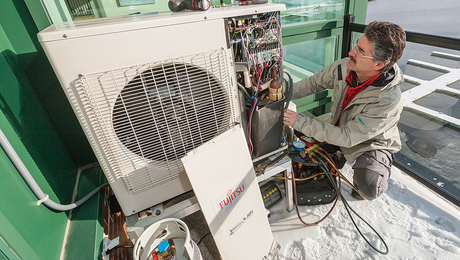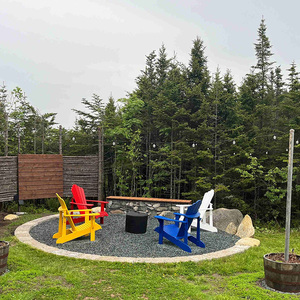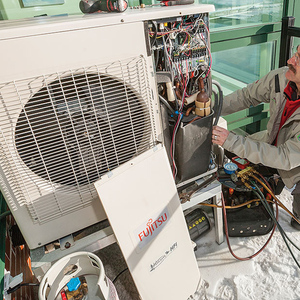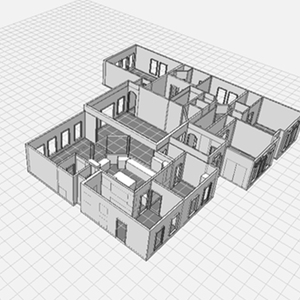I have a 1960s Craftsman 113 tablesaw and I want to replace the tired motor. Any reason why I shouldn’t get a 2 hp 3250 rpm motor from Grizzly? Can the saw handle this motor and do I have to replace anything else?
Thanks for your suggestions!
Edited 7/14/2005 8:50 pm ET by CJ



















Replies
set up for dual belt and cut on..
The TS is actually a Craftsman 113.So duals and the new motor? I think that I have room for duals but what do I gain? Is it easy to mount a new motor? Looks like it bolts right up.Thanks
rlue of the thumb...
1 belt per horsepower...
better energy transfer..
Thanks Imerc!
> 1 belt per horsepower...
Interesting -- My old Unisaw came with a 1 HP motor, and 3 belts.
-- J.S.
my 3 hp has 3 belts...
yur saw is built to take a 3hp motor..
maybe even a 5 hp..
John, a 1 HP motor that's twice the size of today's 5 horse?
I need a set of belts for mine.
Joe H
It's the original 1 HP Unisaw "bullet" motor. A little bigger in diameter and not quite as long as the 2 HP Baldor that replaced it. The back end of the motor is rounded to minimize the clearance hole it reqires in the cabinet. Some people cut the cabinet out to make new motors fit, but I tried re-mounting the capacitors and stuff. Still there are some combinations of blade height and tilt that don't work.
-- J.S.
Consider just changing the pulleys.
I use an 80's version of the Craftsman belt drive that at time of purchase I upgraded to a 1.5 HP 115/230 1 PH motor. Still I was upset with the performance. It turned out the pulleys are 'White metal' as my dad used to describe it. Zinc or whatever the heck they use to injection mold a pulley. Therin lies the problem.
Go to a local drive specialty shop. Generally this is the place you buy bearings and other mechanicals in industry. At that place buy a machined steel or cast Iron set of pulleys. replace them on the Sears motor and the arbor shaft of the blade. Put on a new belt and I guarantee it will work better...probably good enough.
Although in the words of Tim Taylor "More Power!" Just make sure it gets to the blade.
I bought new pulleys and I believe that they are cast and I had replaced the arbor end with a good pulley a few years back. Makes sense that the white metal junk would lose power.I just wired the motor to 110 and the blade runs backwards! I wired the white lead from my switch to the red/yellow on the motor and the black from the switch to the black/white position on the motor. There is a middle position that is not connected. I mounted the motor the same side (I hope I'm not dumb enough to make that mistake). The box was damaged in shipping and the cover where the electrical connections go got crushed but I did see any other damage beyond the cover. Is there a swtich to reverse direction that I don't know about?
There should be a wiring diagram on the motor somewhere that will tell you what wires to switch to reverse rotation.
Are we there yet ?
My good friend has a old craftsman with a 2 HP 220v baldor no problems and plenty of power and 1 belt. Savaging the entire liberal media
I changed the 110 wiring around and still couldn't get it to work so I called Grizzly and found out that this motor does not work with a left tilt saw. I called before I ordered to find out what motor I needed but they got it wrong. So I flipped the blade around and now I can use it until the right motor gets here. Backwards, but it works.
Edited 7/31/2005 8:33 am ET by CJ
Well don't that beat all. A conservative motor, no doubt. Refusing to work with a lefty saw.; )
Are we there yet ?
Hard to say.
Generally the wiring box has hyroglyphics screen printed on the termination board. If not there then possibly on the back of the wiring cover. Then again, there is the website of the motor manufacturer or the motor help desk via phone.
In any 120 volt event. Hook up the green ground wire to where it is marked in the motor and make sure your line cord makes that continuous to the wall and the wall is grounded. That helps provide a safer current path should you screw up... or something shakes loose.
Having it run backwards is more common a fault in 240 volt than 120 hookups. I can't help but think you have more than switched wires...probably the wrong terminals selected. You could be running 1/2 of the windings. Generally a 120 volt setup requires jumpering of two terminals to defeat the winding separation. Is this a 120/240 volt motor?Jack of all trades and master of none - you got a problem with that?